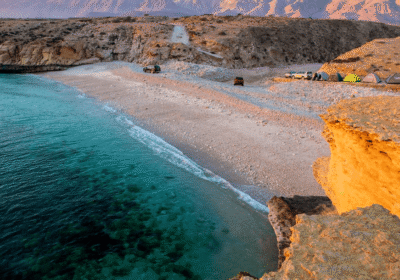No products in the cart.
When is the Best Time to Visit Oman for Perfect Weather?

Discover the best time to visit Oman with our complete weather guide. Learn about seasons, temperatures, and optimal travel months for the perfect Oman vacation.
When is the Best Time to Visit Oman for Perfect Weather?
Planning your trip to Oman requires understanding the country’s unique climate patterns to ensure the most comfortable and enjoyable experience. The best time to visit Oman is between October and April, when temperatures range from 17°C to 35°C (63°F to 95°F), making outdoor activities and sightseeing pleasant and comfortable.
Understanding Oman's Climate Seasons
Oman experiences a subtropical dry desert climate with distinct seasonal patterns. The country’s weather can be divided into three main periods:
Peak Season (October to March): This represents the ideal travel window when temperatures are mild and humidity levels remain low. During these months, you can comfortably explore Muscat’s historic forts, wander through traditional souqs, and venture into the desert without battling extreme heat.
Shoulder Season (April to May): Temperatures begin to rise, reaching into the high 90s (32°C to 37°C), but remain manageable for travel. This period offers fewer crowds and lower accommodation rates while still providing good weather for mountain regions like Al Hajar and Dhofar.
Off-Season (June to September): The hottest months see temperatures soar to 45°C (113°F), making outdoor activities challenging. However, this period coincides with the unique Khareef monsoon season in Salalah, creating a lush, green environment perfect for tropical fruit harvesting.
Regional Weather Variations
Salalah and the South Coast: From June to September, Salalah experiences the Khareef, a monsoon season that transforms the southern coast into a green oasis. Wet winds create humid fog that coats the mountains in moisture, providing ideal conditions for tropical fruits and creating a completely different atmosphere from the rest of the country.
Mountain Regions: Areas like Jebel Akhdar remain moderate throughout the year, offering cooler temperatures even during summer months. December can get quite cold at night in the mountains, so visitors should pack accordingly.
Food and Seasonal Experiences
The timing of your visit greatly impacts your culinary experiences in Oman. Spring months (March-April) coincide with rose-blooming season in Jebel Akhdar, where you can witness traditional rosewater distillation processes and enjoy fresh rose-flavored sweets.
May marks the beginning of summer fruit season, offering visitors the chance to taste fresh dates, which are a staple of Omani cuisine and often served with traditional Kahwa (Omani coffee). The apricot harvest typically begins in May, followed by peaches, figs, and pears throughout the summer months.
During the autumn harvest (September-October), visitors can experience the gathering of pomegranates, walnuts, olives, and grapes, which feature prominently in traditional Omani dishes and celebrations.
Atmospheric Considerations for Travelers
Winter months provide the most comfortable atmosphere for experiencing Oman’s renowned hospitality. The pleasant temperatures make it ideal for enjoying traditional outdoor dining experiences, exploring busy souqs without excessive heat, and participating in cultural festivals like the annual Muscat Festival in January and February.
The shoulder seasons offer a unique atmospheric experience with fewer tourists, allowing for more intimate encounters with local culture and cuisine. Restaurant terraces and outdoor dining areas remain comfortable during these months, perfect for sampling traditional dishes like Majboos and Shuwa.
Understanding Oman’s climate patterns ensures you’ll experience the country at its most welcoming, with comfortable temperatures for exploring its rich culinary traditions and warm, hospitable atmosphere that makes every visitor feel at home.
Have more questions? Contact us.



